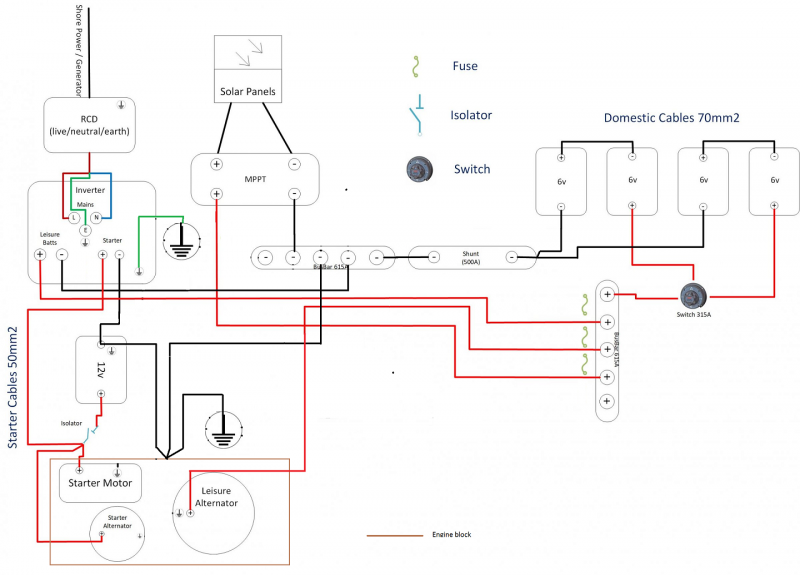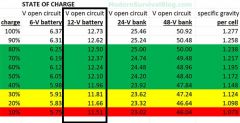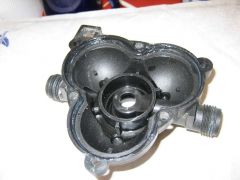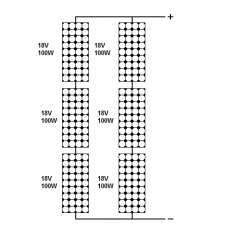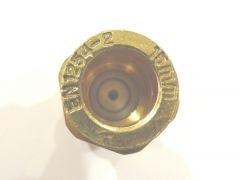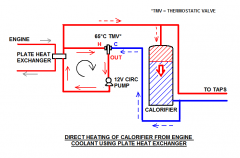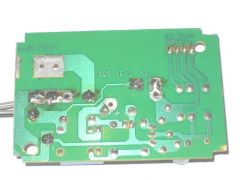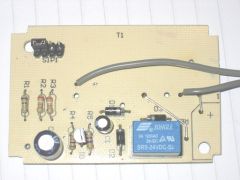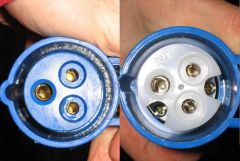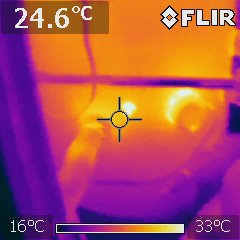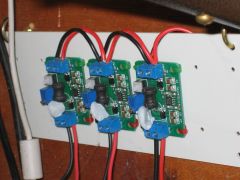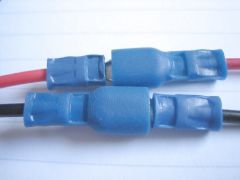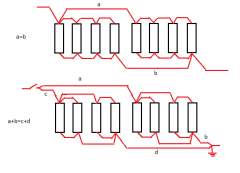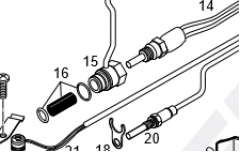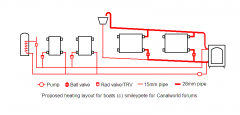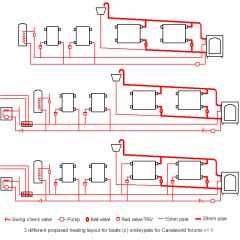-
Posts
7,173 -
Joined
-
Last visited
-
Days Won
4
Content Type
Profiles
Forums
Events
Gallery
Blogs
Store
Everything posted by smileypete
-
Or look at the output of the existing thermostat, is it switching rapidly or constantly on? I'd have thought if it's an overheating problem the switching would happen largely regardless of temperature setting. There should be a service manual for the fridge somewhere, at least when running off 12V there's no electrocution hazard. Maybe just try bridging the thermostat connections for a while if it's a simple 2 wire non electronic thermostat, and see if the compressor runs constantly.
-

Plumbing Question (1) - Basin Wates
smileypete replied to alan_fincher's topic in Boat Building & Maintenance
Back to topic, if depth is an issue, another way is reducing elbow then threaded hose tail: About a fiver for galv iron one from the UK and a bit more for a stainless one from China based suppliers. -

Ultramax Lithium batteries
smileypete replied to Still-waters's topic in Boat Building & Maintenance
Not impossible with FLAs, just split the bank then cycle one half while fully charging the other half. Then swap over rinse and repeat. Would be cool to have a FLA BMS that could do this N ways automatically using mosfets and voltage converters. Not much market for it though with cheap lithiums around the corner... Thing about lithiums is they MUST have a BMS or possibly go up in flames, so the BMS eliminates some of the 'care and feeding' that FLAs need. That plus no sulphation and topping up make it near enough a no brainer, apart from the current high cost of course. -
If it's a 12v compressor fridge then there are plenty of cheap 12V temperature controllers on Ebay, just needs an understanding of hysteresis and knowing where best to put the sensor. Or try a replacement thermostat, bit of a 'parts-jockey' approach without a proper diagnosis, but favourable compared to the cost of a new fridge. Usually the mfr buys in a cheap thermostat and marks it up considerably to sell at their spares price; some parts number sleuthing can usually get the original part at a good price.
-
I suspect they're the usual cheapo narrow bore service valves and not genuine full bore ballofix brand valves, or even a decent knockoff of them. Sometimes they weep a little then reseat OK enough and stop leaking. Anyway back to the OP there are solid copper tails available which can be cut and connected onto with speedfit, compression, flexis etc.
-
Something like this: Though for 24V each battery above may be replaced with 2x12V batts in series. I'd use the BSS minimum of 25mm2 unless the inverter is 2kW or above (24v in this case so 2kW will pull around 100A), then use what the inverter requires in its instructions.
-
Might want a 3k inverter for that if you want a warm or hot wash without faffing around with the hot kettle trick. Is a 3k inverter much more than a 2k one? Or does anyone with a 2k inverter regret not buying a 3k one? A large inverter is one way to use up excess summer solar, then back to relative frugality in winter I s'pose.
-
Assuming you're 12V, a 2kW inverter pulling up to about 200A will need at least 70mm2, based on 'amps divided by three', so 95mm2 isn't far off. The instructions might give a specific size, some use dual terminals and the instructions mention twinned cables for supply, eg 2x35mm2 for both positive and negative, easier to route the cables I s'pose.
-
As long as the batt wiring is half decent, it will play an exceedingly minor role if any in the typical battery death problems. As for cable size, I'd not go above 25mm2 (minimum for BSS) unless planning to have an inverter from 1kW up, then go with what the inverter needs. If anyone has some real world evidence to show otherwise then I'm all ears. (Of course if the inverter is way away from the batts then you'd need to take account of that.)
-
This post cannot be displayed because it is in a forum which requires at least 10 posts to view.
-
Might be worthwhile to get a cheap ebay '5 digit multimeter' and workout the approx depth of discharge from the batts 'resting voltage': https://www.ebay.co.uk/itm/DEOK-0-36-5-Digit-DC-0-33-000V-Digital-Voltmeter-Blue-LED-Display-Panel-3-Wires/222794662267 (about half the price from china via the slow boat) 700 cycles to 50% would be bloody marvellous from 'el cheapo' leisures, but 700 cycles to 10% maybe not so much, could even be better off getting a single batt instead of two. Non sealed leisures are thin on the ground these days (Banner do them?) maybe non sealed truck batts eg Numax or Varta in 664 size would be worth a go. With such a low alt charge voltage I doubt water loss will be a problem in winter. (There are some out there who mistakenly assert that truck batts have thinner plates then leisure batts; the latter often have the same or higher CCA which suggests otherwise. )
-
If there's space how about fit a vertical dead leg with a normal bleed screw on top? Doesn't the little screw on a bottle vent let you seal it when enough air has been bled out?
- 21 replies
-
- morso
- maintenance
- (and 4 more)
-
I can remember when going to one of the only Maplin shops meant a pilgrimage to some random part of Hammersmith, though a railcard meant you could also take in Tottenham Court Road and possibly Edgware Road too. It was just a small shop with racks of those little drawers, an earnest looking youngish bloke with a pasty face and glasses in a white shirt behind the counter. Ironically most of the customers were diehard electronics enthusiasts and probably knew exactly what they wanted.
-
Maybe Maplins would have done better if more like Richer Sounds; fewer smaller stores in non-prime locations and staff selected more for experience and knowledge. Then sponsor, host or run community orientated stuff like maker workshops and repair clinics and electronics clubs. Trouble with becoming a high street chain is that they're seeking to cater for to the very people who'd probably ask for advice then go and buy it from the likes of Amazon and it didn't help that they stocked a bit too much overpriced tat. Probably in more profitable times the owners got dollar signs in their eyes and over expanded instead of being tightly focused on the right things.
-
I just tried it out and with gmail and had a bit of strangeness. The first email from a lesser used gmail account to my normal one got a warning about 'less secure apps' in the lesser used account with a link where I could turn access on. Having done that the next email ended up in the spam bin of my usual account so I had to mark it as 'not spam' The email after that came through fine though it took a few seconds (5-10) So all in all it may be worth creating a 'throwaway' gmail account for e-robot to log into and send the emails, then be watchful they don't initially end up in a spam bin of any accounts the emails are sent to. All in all e-Robot is a nice little app though the format of commands can take some getting used to! Also newer versions of Android are making things more restricted (unless rooted, of course)
-
OK couple of other bits, for the +ve bus bar and fuses you could use one of these a mega/midi fuse box: Usually about £25 to £30, would also allow a midi fuse for the feed to the DC panel your boat presumably has. Also if the combi negative return is moved to the the shunt (non battery end), the negative bus bar will only need to handle the leisure alt, MPPT, and DC panel return, so a lesser rated bus bar would do fine, maybe 100 to 200A depending on size of MPPT and leisure alt.
- 84 replies
-
- victon battery monitor
- battery monitor shunt
- (and 4 more)
-
Out of interest what make/type/model are the existing batts and how much did they cost? Any ideas what voltage the alternator charges at, eg 14.4V?
-
Yeah method 2 and thick cables.
-
OK I modified the diagram in paint rather than try and describe things in words: Also I moved the fuses to the battery end. There are a few other bits and pieces that might be worth a mention, but need to go out now, will try to get back to this later... One thing that springs to mind (now I've uploaded it ) is there needs to be a fuse in the starter batt charge cable, at the starter batt end. There are some different ways to connect the starter alt to the starter batt, some bypass the isolator if the cable is short and well protected, some add a fuse instead.
- 84 replies
-
- victon battery monitor
- battery monitor shunt
- (and 4 more)
-
From the album: Petes
Modified drawing for topic:'Battery Monitor Shunt Wiring Best Practise' -
ISTR that it's best to connect the DC bond to the hull from engine block and not somewhere near the batts. That way if a return cable starts to go faulty there's less likely to be fault currents going via DC bond though the hull and then porp shaft or some other way. Also ISTR there can be some current diverted even if the return cables are good, Keeping Up had this problem. Maybe on the diag you could put a dotted line round the starter and two alts to represent the engine block, this would then be connected to starter bank -ve, negative bus bar, and hull instead of showing direct connections. In practice this may be done from a starter mounting bolt as the starter takes the most current, though engine marinisers may do things differently. Yeah it is fairly esoteric but might come in handy for a year round off grid liveaboard. (the question being - how would you best eq your batts in winter without long hours of engine or genny running?) But only around 0.5% of boaters will face this situation, and to answer such questions will invite 'expert hell', so best do what you suggest and use a single bank and isolator.
- 84 replies
-
- victon battery monitor
- battery monitor shunt
- (and 4 more)
-

Need a Pressure Washer - Not Karcher :(
smileypete replied to Richard10002's topic in Boat Equipment
The pro ones are OK so I've heard, the cheap consumer ones are junk (IME) -
If you want wide angle, why use spots? (rhetorical question ) Maybe bypass the MR11s and go for LED strip, puck lights, or even MR16s. For large boats I wonder if it's better to have the lighting done in mains via a small dedicated inverter, as there's a very wide choice of GU10s. I have a few dimmable Philips GU10s LEDs that are 'all glass' and I wonder if they do without electrolytics, some of the MR11s on ali look the same, but it's a moot point if wide angle is a must.
-
How about buy one or two of a few different ones from Aliexpress (usually the cheapest source), reverse engineer them, let us know what you think. Personally I would look at the 'COB' ones first and foremost... eg: https://www.aliexpress.com/wholesale?site=glo&g=y&SortType=total_tranpro_desc&SearchText=cob+mr11&needQuery=n ETA: The best for a mainstream brand at typical high street prices may be the OSRAM Star MR11 3.7w (345lm) for £9.99: https://www.clasohlson.com/uk/Osram-GU4-(MR11)-LED-Bulb/36-6918



